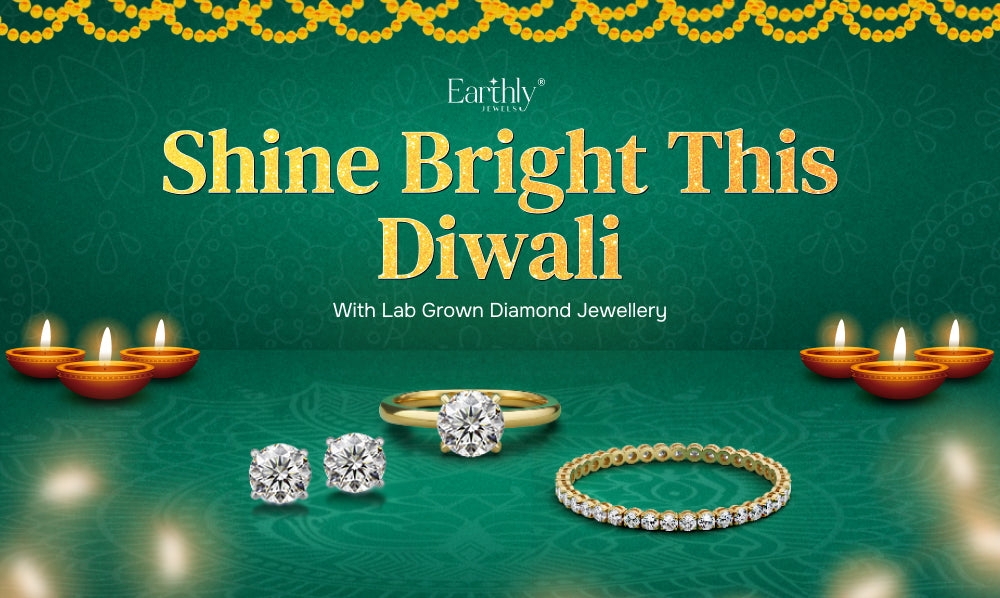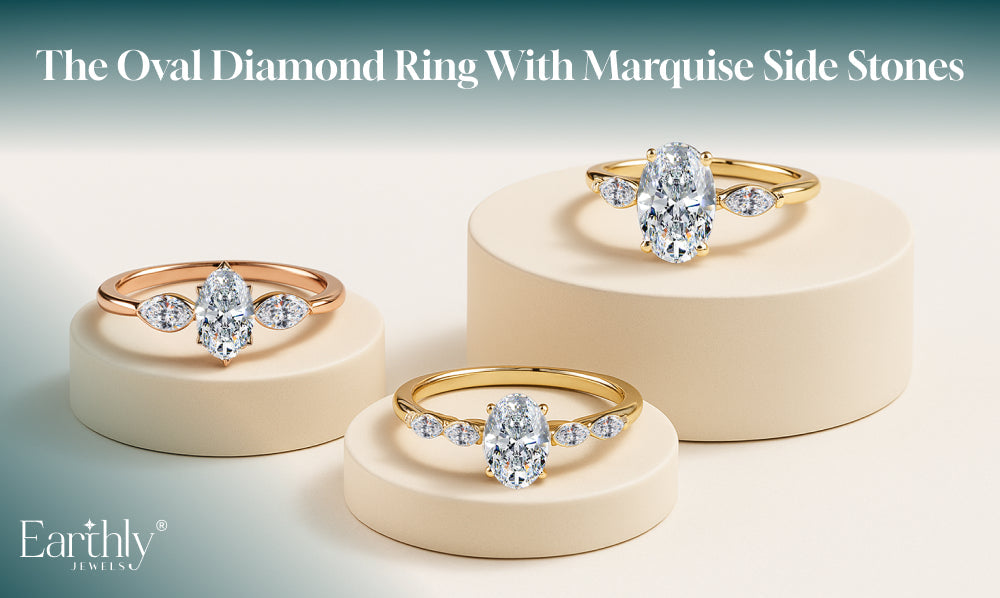 Lab grown diamonds have transformed the jewelry business, providing a more sustainable and ethical alternative to traditional mined diamonds. With growing awareness of the environmental and ethical issues surrounding diamond mining, more consumers are turning to lab created diamonds. These diamonds are conflict-free and have a significantly lower carbon footprint than their mined counterparts.
Lab grown diamonds have transformed the jewelry business, providing a more sustainable and ethical alternative to traditional mined diamonds. With growing awareness of the environmental and ethical issues surrounding diamond mining, more consumers are turning to lab created diamonds. These diamonds are conflict-free and have a significantly lower carbon footprint than their mined counterparts.
In this blog, we aim to demystify the process behind the creation of lab grown diamonds. By understanding the science behind their production, readers will gain insight into how these dazzling gems are cultivated in a controlled laboratory environment. Join us as we explore the fascinating world of lab made diamonds, uncovering the scientific marvels that make them shine bright while paving the way for a more sustainable and ethical future in the jewelry industry.
Understanding Lab Grown Diamonds

An advanced technological process is used in a controlled laboratory environment to produce lab created diamonds, also known as synthetic or cultured diamonds. These diamonds share the same chemical composition and crystal structure as natural diamonds, consisting of carbon atoms arranged in a diamond lattice structure.
While natural and lab grown diamonds may look identical to the naked eye, the two have key differences. Natural diamonds are formed deep within the Earth's mantle over millions of years through geological processes, while lab made diamonds are created in a matter of weeks using high-pressure, high-temperature or chemical vapor deposition methods.
Choosing lab grown diamonds offers several benefits, particularly regarding ethics and the environment. Unlike natural diamonds, which often have questionable origins and may contribute to conflicts and environmental degradation, these diamonds are produced ethically and sustainably. They eliminate the need for diamond mining, reducing the negative impact on ecosystems and local communities. By opting for man made diamonds, consumers can enjoy the beauty of these gems with the assurance of making a responsible and environmentally conscious choice.
The Process of Creation
Lab grown diamonds are crafted using high pressure and high temperature (HPHT) and chemical vapor deposition (CVD). Let's delve into each process to understand how these dazzling gems are brought to life in the laboratory.
The High-Pressure High Temperature (HPHT) method involves subjecting a carbon source, such as graphite, to extreme pressure and temperature conditions resembling those found deep within the Earth's mantle where natural diamonds form. This process typically occurs in a hydraulic press capable of generating pressures reaching several gigapascals and temperatures exceeding 1,400 degrees Celsius. Under these intense conditions, the carbon atoms rearrange into diamond crystals, gradually growing over time. Once the desired size and quality are achieved, the diamonds are carefully cooled and removed from the press for further processing.
On the other hand, the Chemical Vapor Deposition (CVD) method relies on a different approach. In this method, a thin slice of diamond seed material is placed in a vacuum chamber along with a carbon-rich gas, such as methane. When the chamber is heated, the gas molecules break down, releasing carbon atoms that settle onto the diamond seed, layer by layer, forming a new diamond crystal. This process occurs at lower pressures and temperatures compared to HPHT, typically around 800 to 900 degrees Celsius. As the diamond grows, it can be precisely controlled to achieve specific sizes and characteristics.
The scientific principles behind these methods lie in the unique properties of carbon atoms and the conditions required for diamond formation. Carbon atoms have the remarkable ability to form strong covalent bonds with each other, creating a stable diamond lattice structure. Under extreme pressure and temperature, these bonds rearrange, allowing carbon atoms to bond together in the crystal lattice pattern characteristic of diamonds. Maintaining precise conditions, such as high pressure and temperature for HPHT or controlled gas composition and temperature for CVD, is crucial for successful diamond growth.
In essence, both HPHT and CVD methods harness the innate properties of carbon and employ precise conditions to stimulate diamond growth in a controlled laboratory setting. These innovative processes produce lab grown diamonds with the same chemical composition and physical properties as natural diamonds, offering a sustainable and ethical alternative to mined diamonds.
Quality and Characteristics

When evaluating the quality of lab created diamonds, comparable criteria are used as for real diamonds. Let's explore how these sparkling gems are assessed and the factors influencing their color, clarity, cut, and carat weight.
Quality assessment of lab grown diamonds involves scrutinizing their color, clarity, cut, and carat weight. Color is graded on a scale ranging from colorless to yellow or brown hues, with colorless diamonds fetching higher values. Clarity refers to the presence of internal flaws or inclusions within the diamond, which can affect its brilliance and transparency.
The way a diamond is shaped determines how much sparkle and fire it shows. Diamonds are meticulously cut into various shapes, such as round, princess, or cushion, to optimize their light reflection and dispersion. The precision of the cut significantly impacts the diamond's overall appearance and value.
The carat weight measures the size of the diamond, with one carat equal to 200 milligrams. Although larger diamonds are more expensive, their value is also influenced by other elements like cut, color, and clarity.
Contrary to popular belief, man created diamonds have the same qualities as real diamonds. They undergo rigorous grading processes by gemological laboratories to ensure accuracy and consistency. While some may argue that lab-grown diamonds lack the "natural" allure, their quality and beauty are undeniable, offering consumers a sustainable and ethical alternative without compromising brilliance or durability.
In conclusion, lab created diamonds adhere to the same quality standards as natural diamonds, carefully considering color, clarity, cut, and carat weight. By dispelling misconceptions, consumers can confidently embrace these exquisite gems, knowing they possess the timeless elegance and brilliance synonymous with diamonds.
Applications and Uses
Due to their exceptional properties and ethical sourcing, lab grown diamonds find versatile applications across several industries, including jewelry, technology, and medicine.
Lab made diamonds are gaining popularity among consumers seeking beautiful and sustainable alternatives to mined diamonds in the jewelry industry. These diamonds are used in various jewelry pieces, including engagement rings, earrings, and bracelets, offering a dazzling and environmentally conscious choice.
Beyond jewelry, lab created diamonds are vital in technology, particularly in electronics and cutting-edge research. Their exceptional hardness and thermal conductivity make them ideal semiconductors, laser optics, and high-performance electronics materials.
In the medical field, these diamonds show promise in various applications, such as surgical tools, medical imaging, and drug delivery systems. Biocompatible and long-lasting, these materials are revolutionizing healthcare through innovative implants and diagnostic tools.
The future holds exciting possibilities for lab grown diamonds in these industries. Continued research and development may lead to further innovations, such as enhanced diamond coatings for industrial tools, advanced medical devices, and even new carbon capture and storage methods. As technology evolves and awareness of sustainability grows, this diamonds will continue to drive progress and innovation across multiple fields, shaping a brighter, more sustainable future.
Ethical and Environmental Considerations
Lab grown diamonds offer a beacon of hope in the often murky world of diamond mining. They present ethical and environmental advantages over mined diamonds.
Firstly, they are inherently conflict-free, devoid of the ethical concerns of the diamond trade. Unlike mined diamonds, which may originate from regions plagued by human rights abuses and conflicts, lab-grown diamonds are produced in controlled laboratories, ensuring their ethical integrity.
Moreover, the environmental advantages of lab created diamonds are substantial. Traditional diamond mining takes a heavy toll on the environment, causing deforestation, habitat destruction, and soil erosion. Consumers can mitigate these environmental impacts by choosing lab made diamonds, as the production process requires fewer natural resources and generates minimal carbon emissions.
In summary, These diamonds represent a responsible and sustainable choice for conscientious consumers. Their conflict-free nature and reduced environmental footprint make them a shining example of ethical innovation in the jewelry industry, empowering individuals to adorn themselves with beauty while supporting a brighter, more sustainable future for our planet.
Shop Ethical Diamond Jewellery!
Conclusion
In conclusion, lab grown diamonds offer a sustainable and ethical alternative to mined diamonds. These gems are created with identical quality and brilliance through the scientific processes of High Pressure High Temperature (HPHT) and Chemical Vapor Deposition (CVD). .
Understanding the science behind lab grown diamonds empowers consumers to make informed choices, supporting ethical sourcing and environmental sustainability. Individuals can adorn themselves with beautiful jewelry by opting for lab created diamonds while contributing to a more ethical and eco-friendly future. Let's embrace these sparkling gems as a shining symbol of responsible consumption and ethical innovation in the jewelry industry






Share:
Celebrity Jewellery Styles: Inspiration for Your Next Purchase
Investing in Your Future Lab Grown Diamonds as a Hedge Against Inflation